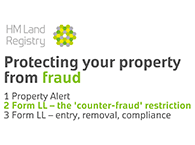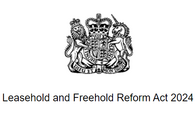|
|
Welcome to issue 17 of Practice and Process. We're back to our usual publishing schedule after the General Election and so, after the expanded list last month, we have "just" a month's worth of practice guide updates for you, including our brand new practice guide 62A on rights to light and air. We hope you find it useful.
|
|
PG7

|
|
When did it change?
22 July 2024
What has changed?
We have amended section 9.
What does it mean for customers?
We have added information on the action to take when you receive back an application with an incorrect property price. If the register is wrong then you can use our contact form, where the deed was wrong then you’ll need to apply alter the register under Schedule 4 to the Land Registration Act 2002.
|
|
PG19

|
|
When did it change?
15 July 2024
What has changed?
We have amended section 3.1.5.6.
What does it mean for customers?
We have amended our guidance to clarify that the wording of the certificate required to satisfy a restriction in standard Form LL or a company counter-fraud restriction should comply with the wording of the restriction.
|
|
PG19

|
|
When did it change?
22 July 2024
What has changed?
We have amended multiple sections.
What does it mean for customers?
The amendments reflect how applications should be made using our digital systems.
|
|
PG26

|
|
When did it change?
15 July 2024
What has changed?
We have amended section 5.
What does it mean for customers?
Our guidance on applications for determination of a lease on surrender by operation of law has been amended. We no longer require confirmation that no deed of surrender has been entered into.
|
|
PG55

|
|
When did it change?
15 July 2024
What has changed?
We have amended sections 3, 5, 6 and 9.
What does it mean for customers?
Section 3 has been amended to encourage use of an email address as an additional method of contact.
Section 5 has been amended to explain that we treat the address provided in our digital registration services or paper application forms as overriding that in any other part of an application.
Section 6 has been amended to explain that when a change of address is required, the application submitted must apply for it by including a ‘change of address for service’ transaction.
Section 9 includes the important things to remember regarding addresses for service.
|
|
PG56

|
|
When did it change?
24 July 2024
What has changed?
We have amended section 3.
What does it mean for customers?
We have amended our guidance as a result of changes in the Leasehold and Freehold Reform Act 2024 coming into force on 24 July 2024, adding a note that statutory remedies will no longer apply to 'regulated rentcharges'.
|
|
PG
62A

|
|
When was it published?
15 July 2024
What does it mean for customers?
This is a new publication containing guidance about the registration of rights to light or air under the Land Registration Act 2002.
|
|
PG82

|
|
When did it change?
15 July 2024
What has changed?
We have amended sections 2.2, 3.2 and 7.
What does it mean for customers?
Sections 2.2 and 3.2 have been amended to remove the requirement that all the conveyancers involved agree to the use of Mercury signatures or conveyancer-certified electronic signatures.
Section 7 has been amended by replacing the term ‘other electronic signatures’ with ‘simple electronic signatures’ and clarifying our guidance on their use.
|
|
Process changes

|
|
Updating our practice guides to reflect our digital systems
We have begun a programme of updating all our practice guides so they reflect how to make applications using our digital systems. The new version of practice guide 19 was published on 22 July and we hope to publish the next tranche shortly. These changes will be indicated in the update section of each guide as they are published.
Acknowledgement of postal applications
Following customer feedback, we’ve changed the way we acknowledge receipt of postal applications. From now on, we will issue only email acknowledgements for all postal applications either to change an existing register or create a new register. This new process replaces the previous approach of sending a postal receipt for specific postal applications only.
If you want an email receipt, do remember to include an email address in panel 7 of forms AP1 (Application to change the register) or FR1 (Application for first registration).
We'll need the original deeds
From October, we will no longer accept conveyancer applications for first registration based entirely on certified copies of title deeds and documents. Read our blog explaining the change.
Enhancements to the portal
You now have extra options in your toolkit when managing your applications through the portal, including a more accurate and specific estimated completion date, improved filters in View Applications, an increased file size and a new 'in submission' status for Digital Registration Service applications.
|
|
|
Anonymous: I am acting on behalf of the seller of a leasehold property. My client also owns a share in the freehold. The other freeholders know they have to sign the Transfer Deed and I have asked them all to provide a completed ID1 Form. One of the freeholders is elderly and lives alone. She has recently been in an accident resulting in her breaking both arms so she is now housebound with very limited range of movement. She is therefore not able to attend a firm of solicitors with the completed form and passport photo to have her identity verified. The freeholder does not live locally to my firm so I am unable to arrange a visit. Please confirm how we can get around this problem.
Adam: Sorry to hear about this difficult situation. Practice guide 67 sets out the options available, including verification of the freeholder’s identity by a non-conveyancer (section 9) and verification by means of a video call (sections 8 and 10). I appreciate a video call would be very difficult, if not impossible, for the freeholder acting alone. If their doctor, or someone in one of the other categories on list who knows the freeholder, can be found and contacted, their confirmation of her identity would appear to be the best route to take.
|
|
|
HM Land Registry training hub
Our HM Land Registry training hub provides access to a wealth of easy-to-find and easy-to-follow guidance and training materials on hundreds of topics – all in one place – to help you prepare and submit high quality applications, and make the best use of HM Land Registry services.
Along with practice guides, you'll find links to guidance pages, webinars, videos, podcasts, checklists and flowcharts.
We’re continuously growing and developing our training offering and will be adding new content as and when it becomes available.
HM Land Registry Essentials
Our self-service training package HM Land Registry Essentials will help you with the basics – whether you’re new to conveyancing or just need a refresher. What does HM Land Registry do? How do we fit into the conveyancing process? And how do you avoid requisitions when submitting applications to us? Find out the answers to these questions and more.
New video guides available on YouTube
Our latest ‘How to’ video guides, designed for sharing with your clients and with colleagues new to conveyancing, have been published on YouTube, as part of our Public Guidance playlist.
|
|
 |
|
Join our customer webinars |
|
 |
|
Are you using the Digital Registration Service? |
|
 |
|
Have you read our Strategy 2022+? |
|
|
|
|